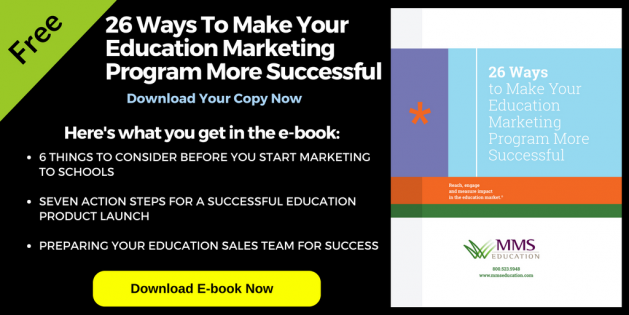It may seem like once you get your product or program inside of the school building your job is done, but it is equally important that you continue to work to win over the audiences inside the building—the students and educators—once your product or program is in place.
Planning and Strategy
Knowing more about these two different audiences—students and educators—can help ensure that your product or program will ultimately thrive in schools. Here are some questions to consider in defining your strategy:
Does your product satisfy a need or solve a problem? Do some research and explore the different needs of educators and students. Identify ways in which your product can fulfill those needs, and use that as a framework to design a cohesive and complementary product or program that will appeal to both audiences.
Is your product relevant? Find out what matters to students and educators—what’s important to them and what does each group covet? What trends in media and even pop culture can you align with? Keep on top of the latest news and findings and weave these trends in. Then, stay relevant by keeping your finger on the pulse of these areas and making updates over time.
Development and Implementation
The strategies above will help you lay down the groundwork for developing a solid mission and goal. Consider the following tips when moving on to development and implementation:
“Gamify”: Integrate game-design elements or game principles into your product or program to increase student appeal. Some suggestions for how to gamify include: accumulation of points, levels that can be achieved or digital badges that can be shared for different accomplishments.
Be hands-on: Whenever possible, provide hands-on experiences, and students will be more likely to engage. This will create a better story around your product or program that will, in turn, garner further student and educator support.
Offer rewards: Provide tangible rewards to students. Students love giveaways, and educators will be more likely to support a program or product that helps their students earn these types of rewards.
Provide communications support for educators: Equip educators with materials to share with their administration and community about their involvement with your product or program. Materials might include a certificate of achievement or a template for an email message or social media post. Educators will want to “brag” about what they are doing, and if you help them do this, they will be more likely to engage, and stay engaged.
Get feedback: Connect directly with end users and beneficiaries of your product to gauge effectiveness, get ideas, and make adjustments if needed. Whether you are developing a brand-new product or program or are enhancing an existing one, before going too far down a path, it is a good idea to test the waters with real educators and students.
For four decades, MMS Education has been helping companies like yours market, sell, launch, and manage free products and programs to schools and can help you do the same. Contact us or call us at 800.523.5948 to see how MMS Education can help you reach, engage, and measure impact in the pre-K–12 education market.

